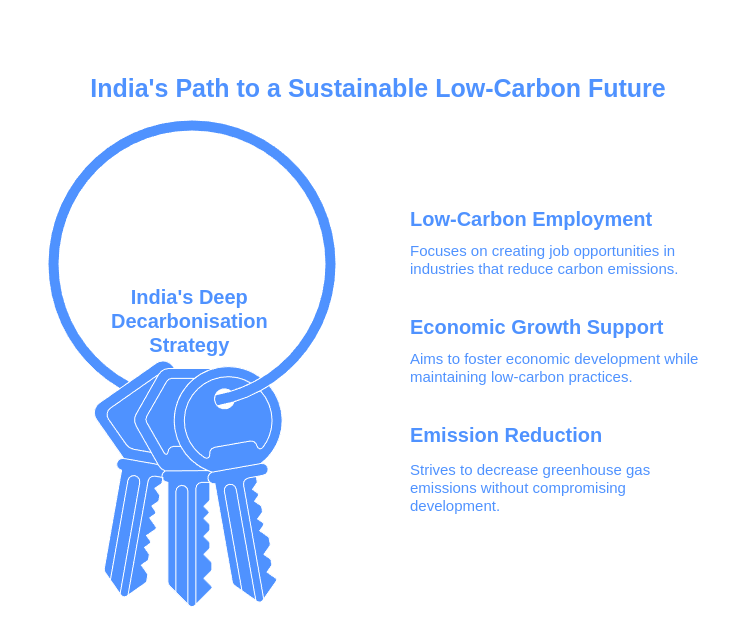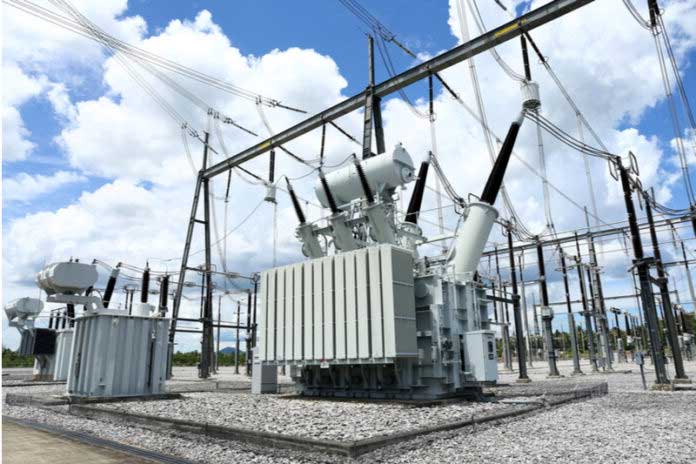Climate change is posing a critical threat to the Indian economy, and the signs of it are already visible. Some of these include heat stress, reduced freshwater supply, intense tropical cyclones, soil drying, rising sea levels, and more. However, this alarming situation caused by global warming across India is also creating an opportunity to scale up the economy. This is possible through the emergence of new industries and technologies aimed at decarbonisation, development, deployment, and large-scale manufacturing.
In this article, you will gain a clear understanding of state-level electricity grid decarbonisation initiatives across India. So, read on till the end!
Policy Decisions and Implementations by India for Deep Decarbonisation
India is working towards achieving a low-carbon economy and is currently implementing three key state-level strategies for this purpose:
-
Providing employment in low-carbon sectors
-
Supporting low-carbon economic growth
-
Reducing greenhouse gas emissions without hindering development goals
Creating jobs in the green sector is one of the most effective strategies among these. India has introduced policies in several states to encourage the transition of workers from coal mining to energy sectors, green jobs, or lighter industries.
Through these efforts, India has achieved more competitive electricity rates by increasing the use of renewable energy and reducing carbon emissions. While this has helped in supporting low-carbon economic growth to some extent, several outdated policies still need to be eliminated at both state and national levels to accelerate the pace of decarbonisation.
As per available data, there are more than 150 national-level policies that, instead of discouraging, actually encourage greenhouse gas emissions. Stringent policy changes are necessary to curb carbon emissions at a faster rate in India.

Modifications to Existing Policies
India’s efforts towards electricity grid decarbonisation can be strengthened through several approaches. However, certain changes in existing policies are essential. The country needs to implement a well-structured sequence of diverse climate policies to restore economic stability, which would help achieve:
Once these policy changes are implemented, emissions will be controlled, beginning at the state level. Over time, it is estimated that India will generate tens of millions of employment opportunities while simultaneously boosting economic growth. If the right policies are enforced, greenhouse gas emissions can be reduced by at least two-thirds before mid-century (2050).
India’s State-Level Electricity Grid Decarbonisation Plans
Implementing state-level policies for decarbonising electricity grids presents several challenges, primarily due to limitations in state-wise authority. States must coordinate with multiple overlapping institutions and agencies to execute these plans effectively.
New policies are being introduced to replace outdated ones, with the aim of developing innovative strategies to prioritise electricity grid decarbonisation. These strategies include:
1. Retiring Coal Plants
Power providers are being encouraged to systematically retire coal plants while investing in distribution and transmission infrastructure to enhance demand response. Additionally, storage capacity needs to be doubled from Business-As-Usual (BAU) projections to 450 GW by 2050.
These measures will make India’s electricity grids more flexible and better prepared to run on renewable energy in the future.
2. Generating Carbon-Free Electricity
A carbon-free electricity standard must be implemented to ensure that 90% of the country’s electricity is sourced from non-fossil fuel sources by 2050. This target is 20% higher than the current trajectory, which aims for 70% renewable energy usage under BAU projections.
3. Subsidising Expensive Technologies
Another important strategy is to provide subsidies for expensive technologies that support decarbonisation. However, as these technologies become cost-competitive in the long run, subsidies should be gradually reduced.
Conclusion
This article provides a clear understanding of how India and its states are implementing policies to accelerate electricity grid decarbonisation. Additionally, the country is taking significant steps to transform the transport and industrial sectors, contributing towards achieving the overall decarbonisation goal by 2050.








